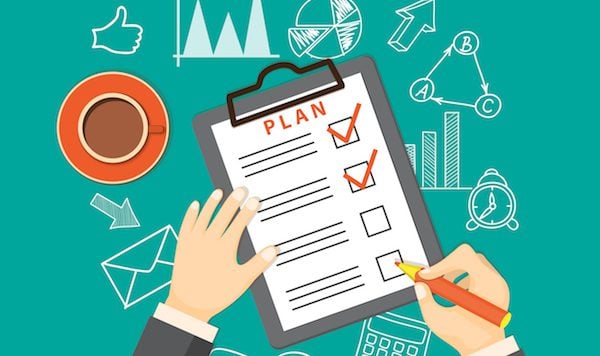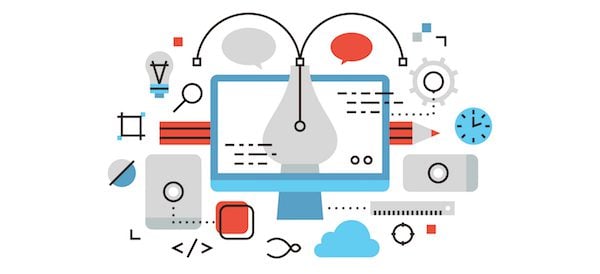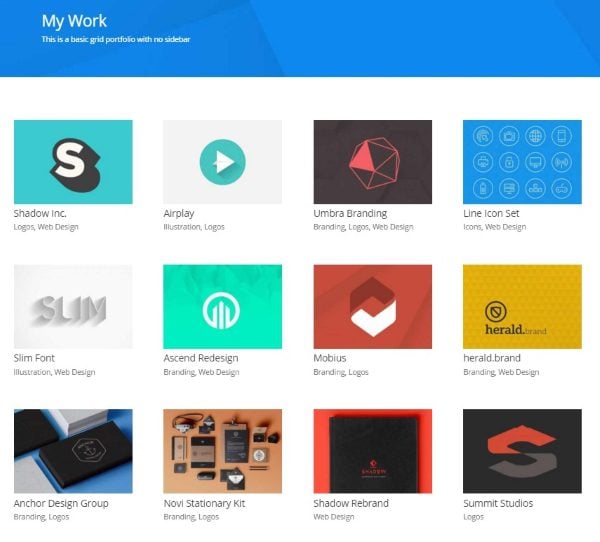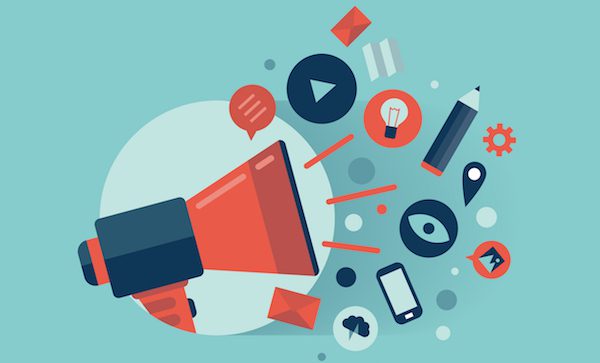[ad_1]
There are lots a great reasons to become a freelance web designer. You get to be your own boss and choose your hours, your clients, pay rate, and work load. You get to work on projects you choose based on interest, strengths, skills, or even something you want to get better at. Freelance web designers can work full-time or part-time.
But freelance web design isn’t just about creative work. It’s also a business. Your best chance of success is getting started with proper resources in place from the beginning. And it helps to have a roadmap to show you how your business should develop and what you should focus on.
A Few Things to Think About
Web design is not easy. If you’re looking for an easy business then move along. Web design has a high level of expectation. Clients want their sites to look better than everyone else’s. They sometimes set their expectations so high that they can never be met and you’ll end up either reeducating them or disappointing them.
You are still working for clients and your goal is to please them. This doesn’t mean creating anything you want when you want. This means creating what they want (even if they don’t know what that is) and creating it when they want (which could be sooner than you want it to be). Every client then becomes your boss. No one is pushing you to get work done instead of spending time on a distraction of choice.
Work-life balance is another thing. If you’re always at home it can sometimes be difficult to work when you should or not work when you shouldn’t. You’ll have to deal with people that want to take advantage of you being at home. You’ll have to deal with emergency requests from clients. This might mean working weekends.
There will be times when you don’t have work and you have to take work you don’t enjoy. Plan for times when there is no work. Have money to live on and market with. We all strive to build predictability into our businesses, but in reality it will be unpredictable for a while until you develop a solid client-base and product offerings.
Business Planning
Image by sliplee / shutterstock.com
Business Plan
A business plan will help you develop your roadmap. It shows what your business will look like for the next 3-5 years. But you’ll still benefit from the information and research even if you don’t create a formal business plan.
The typical business plan includes:
- Cover Page – an overall description of your business.
- Executive Summary – a snapshot of your company and describes your goals.
- Company Description – tells what you do, what makes you different, and what markets you will serve. This could also include your organization and management structure (only needed if you have a team).
- Market Research – shows your industry, market, and competition.
- Product/Service Line – a detailed look at the products and services you provide.
- Marketing and Sales – your marketing and sales strategy.
- Financial Projections – how much you expect to make and when. This is important if you’re requesting funding.
Expenses
You’ll need enough savings stashed away until you can start making a profit. It could be months before you get your first client and it could be even longer before you get paid for the assignment. The more you have saved better. Of course living expenses aren’t required if you’re working part time.
Rates
Before you start pitching to clients you’ll need to have your rates worked out. It’s difficult to find the right balance when starting out. If you don’t charge enough you could have a hard time paying the bills, but if you charge too much you might not be working at all. Too low and you’ll get the bargain hunters. Too high and the expectations might be hard to live up to.
What you can charge will depend on your experience and portfolio. It comes down to what the market will bear, how much you need, and what the value of your work is. Choose your pay structure. Some bill by the hour, while others bill by the project. Some have developed package prices.
No matter which structure you decide to use I recommend determining an hourly rate to base your prices on.
First add up your business and personal expenses to see how much you need to make in a month. You can’t go under this number. Add a little extra for profit. You’ll need money to replace or repair equipment, invest in better tools and courses, etc.
Next look at the number of billable hours you’ll have in that month. If you plan to work 40 hours a week then you won’t have 40 billable hours. Keep in mind all of the other business administration tasks you’ll have to deal with, such as marketing, answering questions, working on your website, learning, etc. For example, you might end up with 20 billable hours.
If you’ve decided you need $75 an hour for your billable hours, then you can use this number to determine your rates for projects. For example if you determine that a project will take 12 hours then you would pitch the project for $900. If you end up doing the project for less time then you’ll make more per hour and increase your profits. Of course keep you competition in mind when giving an estimate.
Taxes
You’ll have to pay your own taxes so don’t forget to include it in your costs and don’t forget to set it aside when you get paid.
Business License
It’s easy to forget that you might need a business license. Every country is different so you’ll have to research this. In the US every state is different so check with your state laws and local county clerk’s office.
Insurance
You are responsible for your own insurance. This includes health, life, and business insurance.
Retirement
Don’t forget to set something aside to retire on.
Develop Your Skills
Image by Incomible / shutterstock.com
- For freelance work, your skillset and portfolio are more important than a degree. You need training. Certifications are great. A degree is often out of date by the time you finish. Look for courses that develop skills for current trends.
- You need a good working knowledge of HTML and CSS. You won’t need to code the website by hand, but having a basic understanding of these languages will help you have a better understanding of what’s possible and what’s not. If you want to get an advantage you should learn some development skills because the two overlap. If you can code then you’ll have an advantage over those who can’t.
- Learn Photoshop. You can hire a graphic artist for any masterful work you need done, but you will need to know how to design the building blocks for your layouts in Photoshop.
- Be familiar with current trends, popular plugins, and themes. And staying up on the latest news and trends won’t be easy when you’re working on projects so set aside time for this.
- Be a listener and a communicator. Know and understand what your clients need and keep them informed throughout the project. There’s nothing worse than designing the site to completion only to find that you misunderstood what the client was asking for. You’ll also need to communicate with web developers, graphic artists, and other team members to ensure the website is developed according to customer’s needs and on schedule.
- Be creative. Web designs have to look great, have an intuitive UI, and have a UX that brings the users back for more. One of the primary responsibilities of the designer is the layout. If you can create layouts that clients love then you’ll position yourself better to be in demand as a web designer.
- Be detail oriented. Even the smallest detail left out can be costly. It can cost time in revisions and it can cost current and future clients because they might find a new designer and tell their friends.
- You will also need business skills. You’ll need to know about business planning, handling customers, taxes, etc. You’ll be a business manager. Develop project management skills. Set goals based on customer requirements and break the goals down into smaller projects.
Choose Your Niche and Specialize
Choosing a niche helps guide your skillset and tells you what to learn. I don’t recommend narrowing your focus too much, however. You could look at it as having a focus on eCommerce, on designing websites for the financial or legal industries, weddings, bands, or just focusing on WordPress as your platform. This allows you to work with specific tool sets such as event planners and coursework plugins.
Tools and Equipment
Image by Bloomua / shutterstock.com
One advantage of freelancing is you get to build your own work environment. Depending on your goals you might work from home or from an office. If you’re setting up an office in your home make sure you have distraction-free environment. This needs to be a room where no one disturbs you while you work. You’ll also need your tools of the trade: a powerful computer, software, desk, website, phone, business cards, etc.
Build Your Portfolio
You’ll need a body of work to show potential clients. It helps to have around a half dozen projects that you can be proud of. They needs to be your absolute best work. Also show a diversity of work to show a range of design skills. This doesn’t have to be work you’ve done for clients (at least not when starting out). Use templates and theme designs, mockups, child themes, etc. Your portfolio should show the types of websites you want to design. You can even create themes to sell.
The first thing on your list is your own website. Pick a theme that you would like to work with as a designer and customize it. A lot of client work will be exactly that – modifying WordPress themes. You’ll need to keep both your website and your portfolio up to date with current trends. Be sure to include a prominent contact page so potential clients can get in touch with you easily.
Marketing and Building Your Brand
Image by Bloomua / shutterstock.com
You’ll have to spend a lot of time marketing your work to potential clients. Your website will be a great way for them to see your work, but don’t expect them to find it without any effort on your part. You’ll still need to do marketing. Spend time every day on marketing to new clients. This is even more important when starting out.
There are lots of marketing techniques available at your disposal including cold-calling; using word of mouth, email, and social channels such as LinkedIn; freelance websites and guest posting on websites; partnering with other designers and developers; contacting people in person; utilizing your professional circle, handing out business cards’ doing pro bono (free) work for non-profits; writing a book; hosting free webinars for a popular website; providing giveaway items (free downloads) on your website; and placing local newspaper, radio, television, and even magazine ads. Word of mouth advertising will take you a long way, so be sure to ask clients for referrals.
As far as your brand goes, you want to look like a professional and not just a hobbyist. You can use your name to create your logo and then use that logo across multiple platforms. The same goes for images. Get a professional image and use it everywhere.
The Project
Image by ProStockStudio / shutterstock.com
Make sure you completely understand the deliverables of the project. This includes exactly how the website is supposed to look and act, and the project deadline.
Develop a contract that includes:
- The project’s title
- Start date
- End date
- Complete description of the project
- Milestones with dates
- Definition of support after the project
- Payment terms
- Signatures from both parties
Make sure your contracts are clear as to what is included, what is not, when the projects ends, and how and when payment is expected. It’s often a good idea to get a deposit before starting a project. This not only helps pay the bills but it also shows that the client is serious about the project. This will help keep you from wasting your time.
Project planning and time management is a key of success for any freelance business and web design is no different. Project management tools and a calendar are helpful for keeping track of the project and keeping it on schedule. You’ll need to mark deadlines and track milestones. Also schedule time for marketing, events, courses, etc.
Payment
Unless you already have an established relationship and understanding with this client don’t start work without a deposit. Typical deposits range from 25-50% of the total cost. Some prefer to bill in intervals as milestones are achieved while others prefer to send one bill for the remainder at the close of the project.
Some ask for immediate payment, some request the payment be made within 5-15 days of completion, and others give up to 30 days. I don’t recommend going beyond 30 days. Whichever way you prefer is fine, just make sure that it’s clearly spelled out in the contract.
Send your invoice in a timely manner. If the client hasn’t paid within the requested time-frame then send a friendly reminder. If you feel that you’ve waited long enough after multiple attempts for collection you might consider consulting a lawyer and pursuing court or collection agency. It almost never comes to that though.
Resources
Here is a short list of resources to get you started in the right direction.
Final Thoughts
Following your roadmap, and modifying it as needed, will not only get you started in the right direction to become a freelance web designer but it will also help keep you in business for many years to come. Once you’ve gotten started be sure to revisit your business plan and reflect on your goals. See what worked, what didn’t, and make changes as needed.
Keep in mind there are negatives too. It’s hard work, you have to market yourself, and you’ll work long hours to hit difficult deadlines. You’ll have clients that want to make too many changes, be hard to work with, and take too long to pay. It will be difficult to take a vacation (not working = no money), and you are responsible for every aspect of the business.
Just keep in mind that the greatest advantage of freelancing can also be the greatest challenge: you’re on your own to push yourself and make your own decisions. It’s all on you and that’s not for everyone. Don’t be afraid to admit that and change course if it isn’t your cup of tea. There’s nothing wrong with that. You have to be fully committed to your craft. That’s what’s going to see you through the hard times. If done for the right reasons freelance web design can be a rewarding business.
Now it’s your turn. Are you a freelance web designer? Did you develop a roadmap to guide you? Do you have anything to add?
Article thumbnail image by Bloomua / shutterstock.com
[ad_2]
Source link






